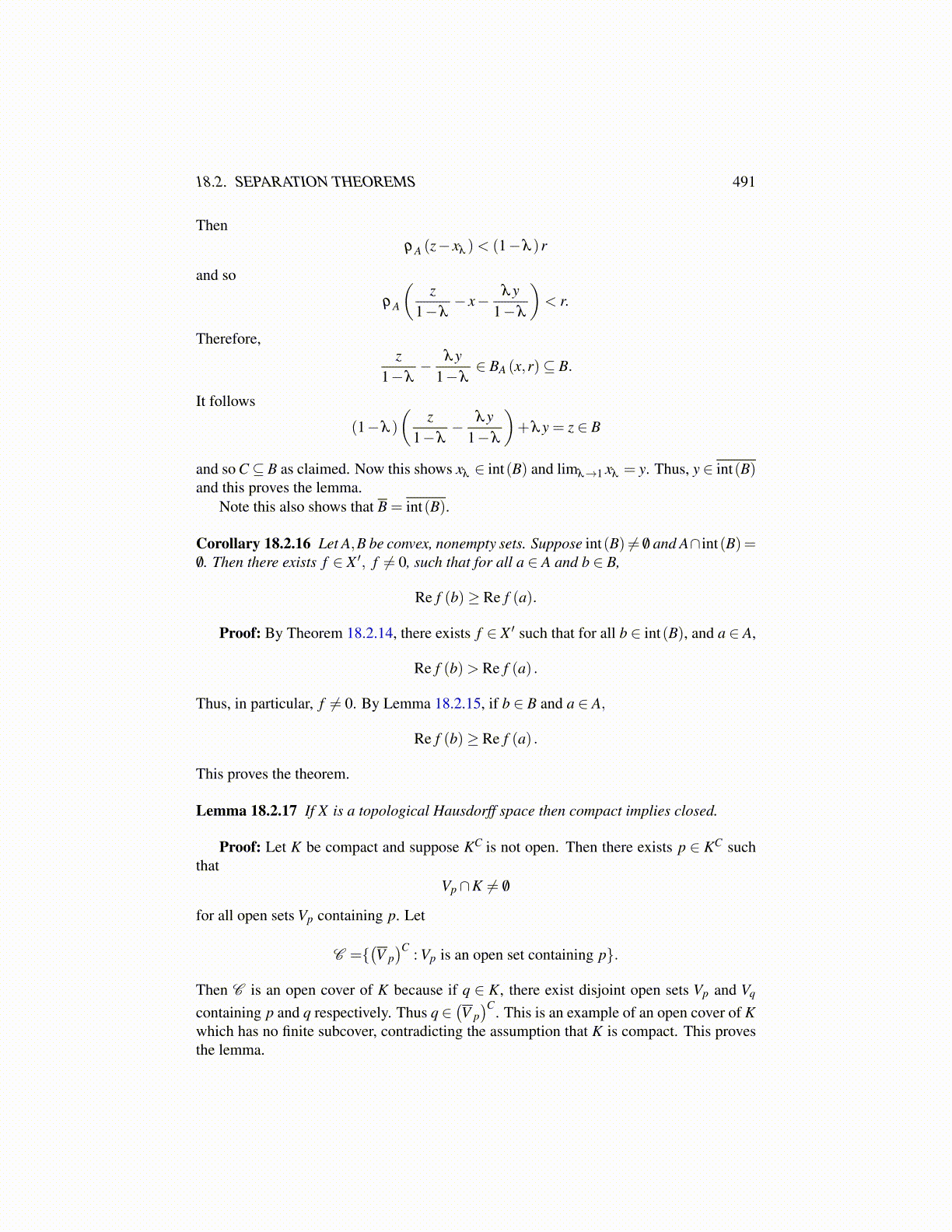
18.2. SEPARATION THEOREMS 491
ThenρA (z− xλ )< (1−λ )r
and so
ρA
(z
1−λ− x− λy
1−λ
)< r.
Therefore,z
1−λ− λy
1−λ∈ BA (x,r)⊆ B.
It follows
(1−λ )
(z
1−λ− λy
1−λ
)+λy = z ∈ B
and so C⊆ B as claimed. Now this shows xλ ∈ int(B) and limλ→1 xλ = y. Thus, y ∈ int(B)and this proves the lemma.
Note this also shows that B = int(B).
Corollary 18.2.16 Let A,B be convex, nonempty sets. Suppose int(B) ̸= /0 and A∩ int(B)=/0. Then there exists f ∈ X ′, f ̸= 0, such that for all a ∈ A and b ∈ B,
Re f (b)≥ Re f (a).
Proof: By Theorem 18.2.14, there exists f ∈ X ′ such that for all b ∈ int(B), and a ∈ A,
Re f (b)> Re f (a) .
Thus, in particular, f ̸= 0. By Lemma 18.2.15, if b ∈ B and a ∈ A,
Re f (b)≥ Re f (a) .
This proves the theorem.
Lemma 18.2.17 If X is a topological Hausdorff space then compact implies closed.
Proof: Let K be compact and suppose KC is not open. Then there exists p ∈ KC suchthat
Vp∩K ̸= /0
for all open sets Vp containing p. Let
C ={(V p)C : Vp is an open set containing p}.
Then C is an open cover of K because if q ∈ K, there exist disjoint open sets Vp and Vq
containing p and q respectively. Thus q ∈(V p)C. This is an example of an open cover of K
which has no finite subcover, contradicting the assumption that K is compact. This provesthe lemma.